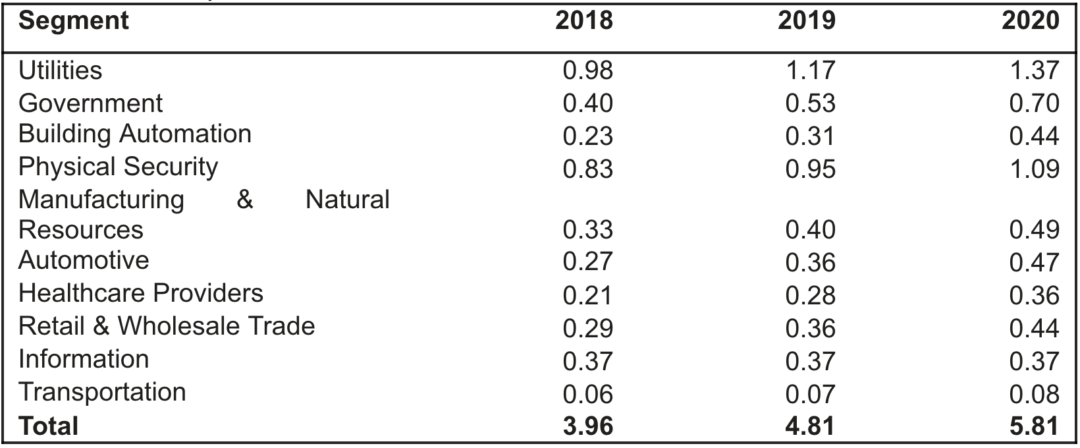CTOs, CIOs and equivalent roles will have to start embracing the IoT as a way of accelerating digital transformation initiatives. This will become more important as Gartner forecasts that the enterprise and automotive Internet of Things (IoT) market will grow to 5.8 billion endpoints in 2020, a 21% increase from 2019. By the end of 2019, 4.8 billion endpoints are expected to be in use, up 21.5% from 2018.
Everything from utilities to transport
Evert big industry is being disrupted and to stay ahead of the curve, end user organisations need to tap into the increasing amount of data produced from IoT devices and endpoints to drive digital transformation, in order to keep the wolves from the door.
Utilities will be the highest user of IoT endpoints, totalling 1.17 billion endpoints in 2019, and increasing 17% in 2020 to reach 1.37 billion endpoints — CTOs at British Gas, EDF Energy, E.ON and so on must take note and start using the IoT resources at their disposal to combat the threat from disruptors, like Bulb.
“Electricity smart metering, both residential and commercial will boost the adoption of IoT among utilities,” explained Peter Middleton, senior research director at Gartner. “Physical security, where building intruder detection and indoor surveillance use cases will drive volume, will be the second largest user of IoT endpoints in 2020.”
‘IoT the top priority in driving digital transformation’
Building automation, driven by connected lighting devices, will be the segment with the largest growth rate in 2020 (42%), followed by automotive and healthcare, which are forecast to grow 31% and 29% in 2020, respectively (see Table 1). In healthcare, chronic condition monitoring will drive the most IoT endpoints, while in automotive, cars with embedded IoT connectivity will be supplemented by a range of add-on devices to accomplish specific tasks, such as fleet management.

What are the key technologies for embracing digital transformation in 2019?
Top use case opportunities vary by region
Similar to 2019, residential electricity smart metering, which can be used for more accurate metering and billing in the home, will be the top use case for Greater China and Western Europe in 2020, and will represent 26% and 12% of total IoT endpoints, respectively. North America, in comparison, will see its highest IoT endpoint adoption in building intruder detection, such as door and window sensors, which will represent 8% of total IoT endpoints.
The biggest market for endpoint electronics revenue: America and China
In 2020, revenue from endpoint electronics will total $389 billion globally and will be concentrated over three regions: North America, Greater China and Western Europe. These three regions will represent 75% of the overall endpoint electronics revenue. North America will record $120 billion, Great China will achieve $91 billion and Western Europe will come in third totalling $82 billion in 2020, according to Gartner.
“Overall, end users will need to prepare to address an environment where the business units will increasingly buy IoT-enabled assets without policies for support, data ownership or integration into existing business applications,” said Alfonso Velosa, research vice president at Gartner. This will require the CIO’s [and CTO’s] team to start developing a policy and architecture-based approach to support business units’ objectives, while protecting the organisation from data threats.
“Product managers will need to deliver but also to clearly and loudly communicate their IoT-based business value to specific verticals and their business processes, if they are to succeed in this crowded arena.”
Related articles
Why digital trust matters in the IoT
How IoT and digital are boosting companies’ profitability
The impact of the Internet of Things
Gartner: 5 emerging technology trends with transformational impact
Emerging technologies, are they set to transform business?
The digital transformation of things
Gartner: top 10 data and analytics technology trends for 2019
Accessing the benefits of edge computing — a must for industry 4.0







